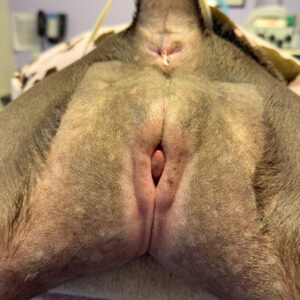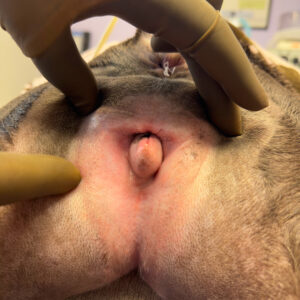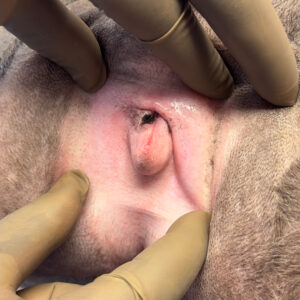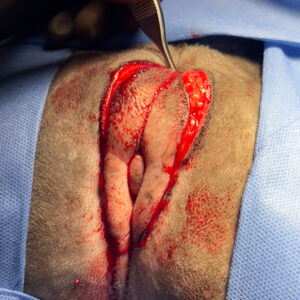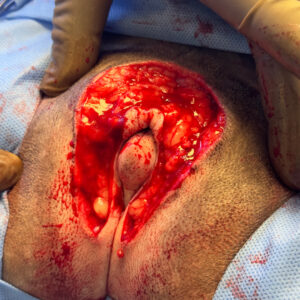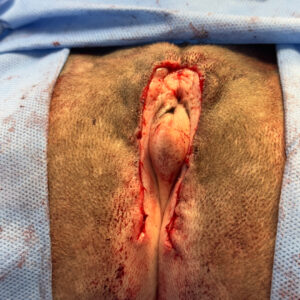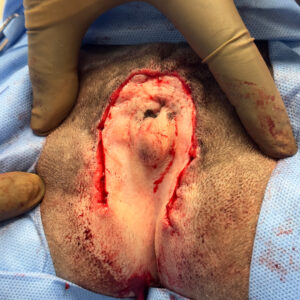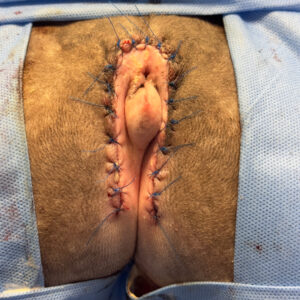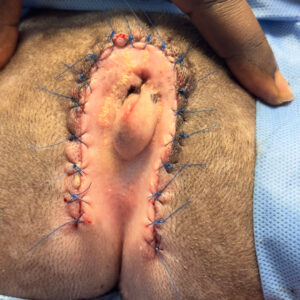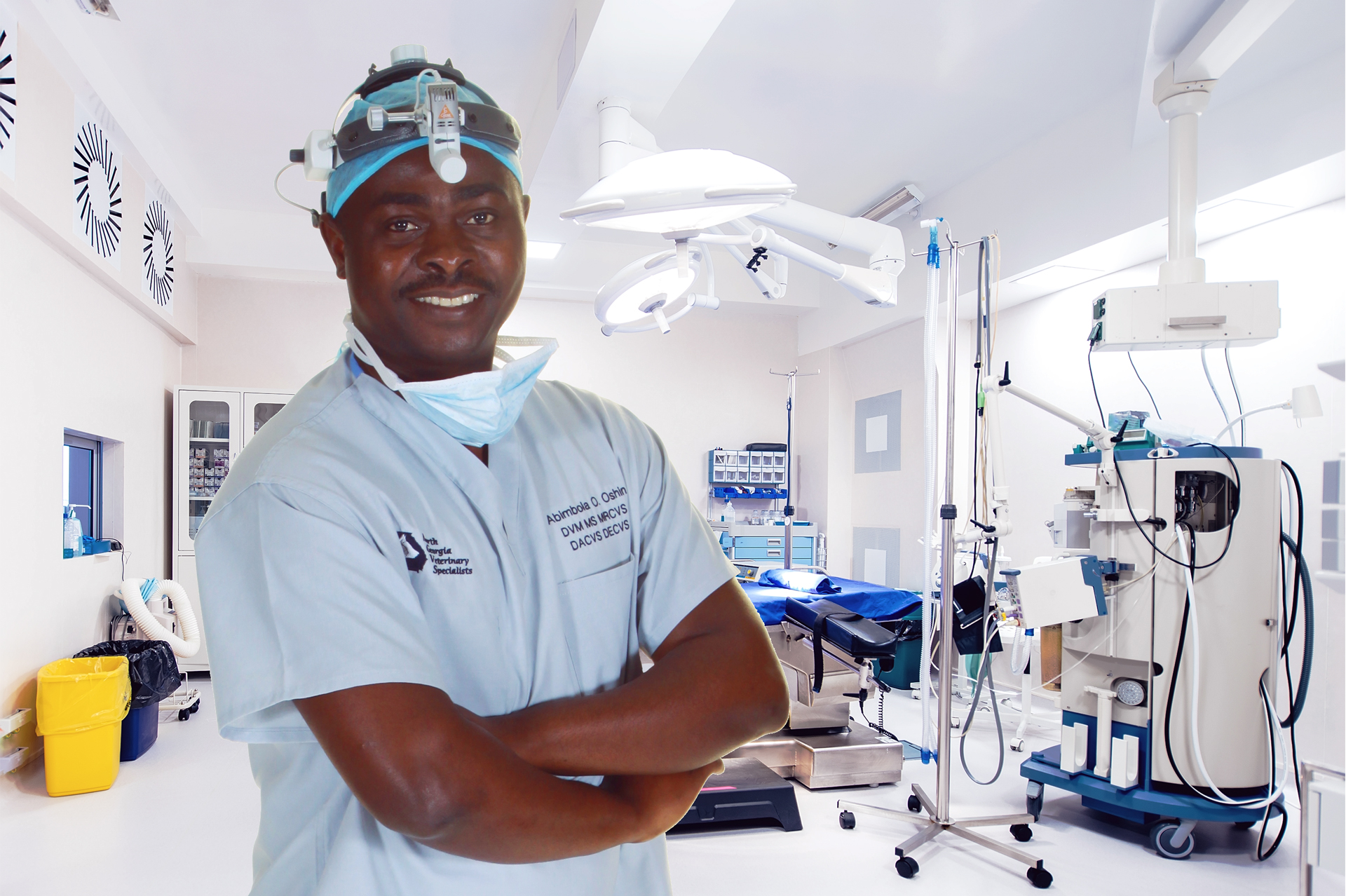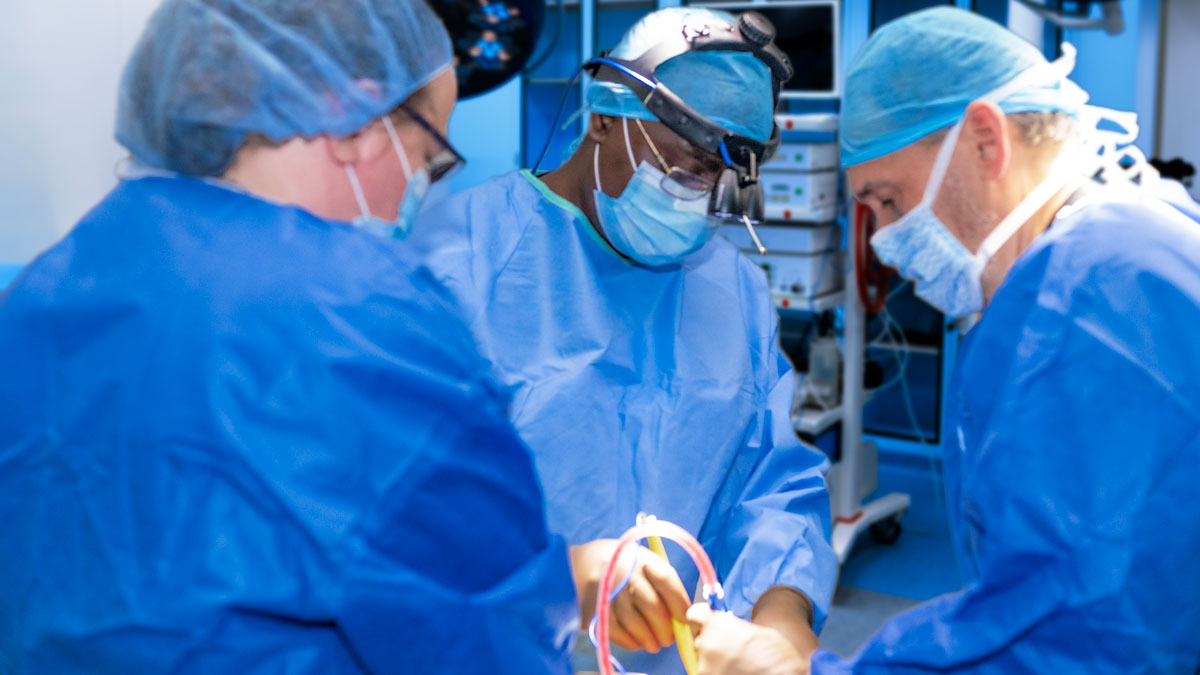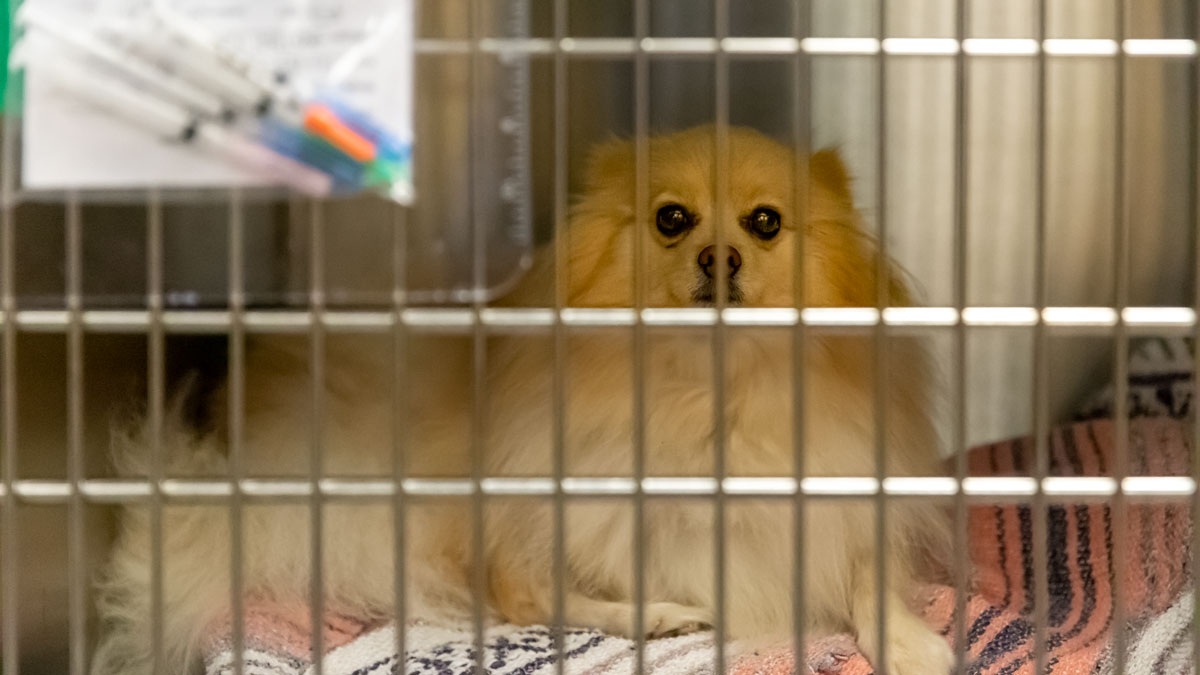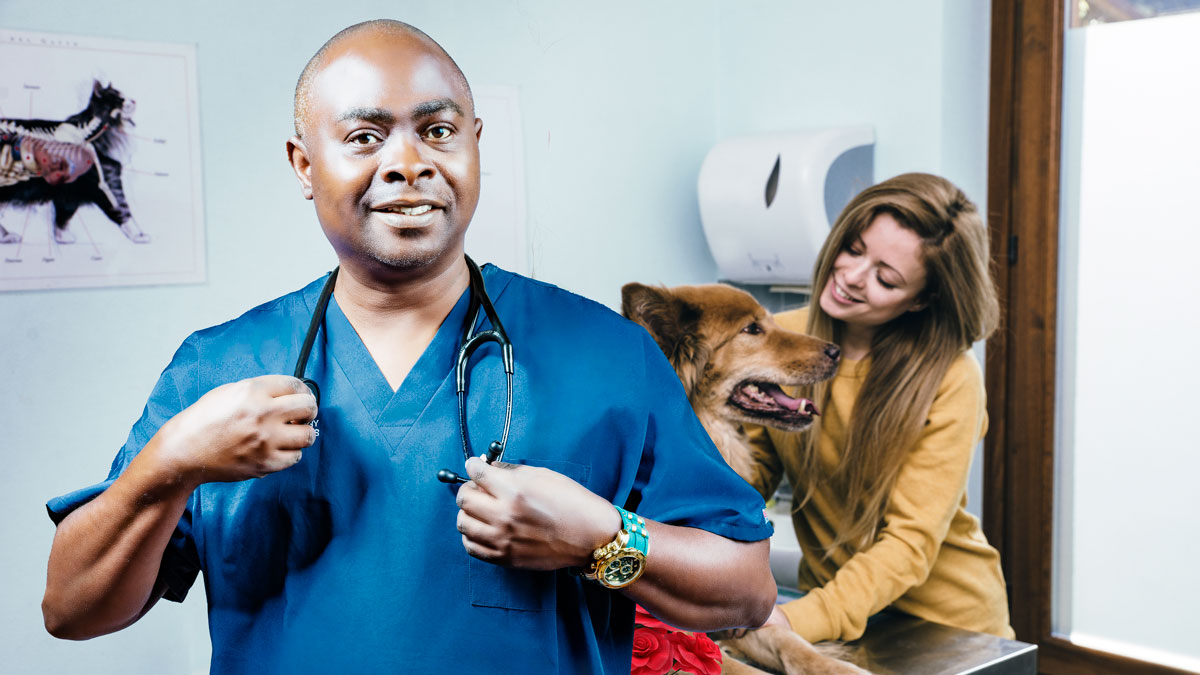Canine episioplasty is a surgical procedure used to correct recessed vulva in female dogs. This condition can lead to chronic infections and discomfort for your pet. If your dog is experiencing these symptoms, understanding episioplasty is crucial. This article will explain what canine episioplasty is, how it helps, and what to expect from the procedure.
Key Takeaways
A recessed vulva can lead to serious health issues in female dogs, including infections and discomfort, and is often linked to breed and body weight.
Canine episioplasty is a surgical procedure that corrects structural problems related to a recessed vulva. It improves ventilation and reduces infection risks.
Post-surgical care is critical for recovery, requiring pain management, activity restriction, and regular monitoring for infection signs to ensure healing.
Recessed Vulva and Excessive Perivulvar Skin Folds
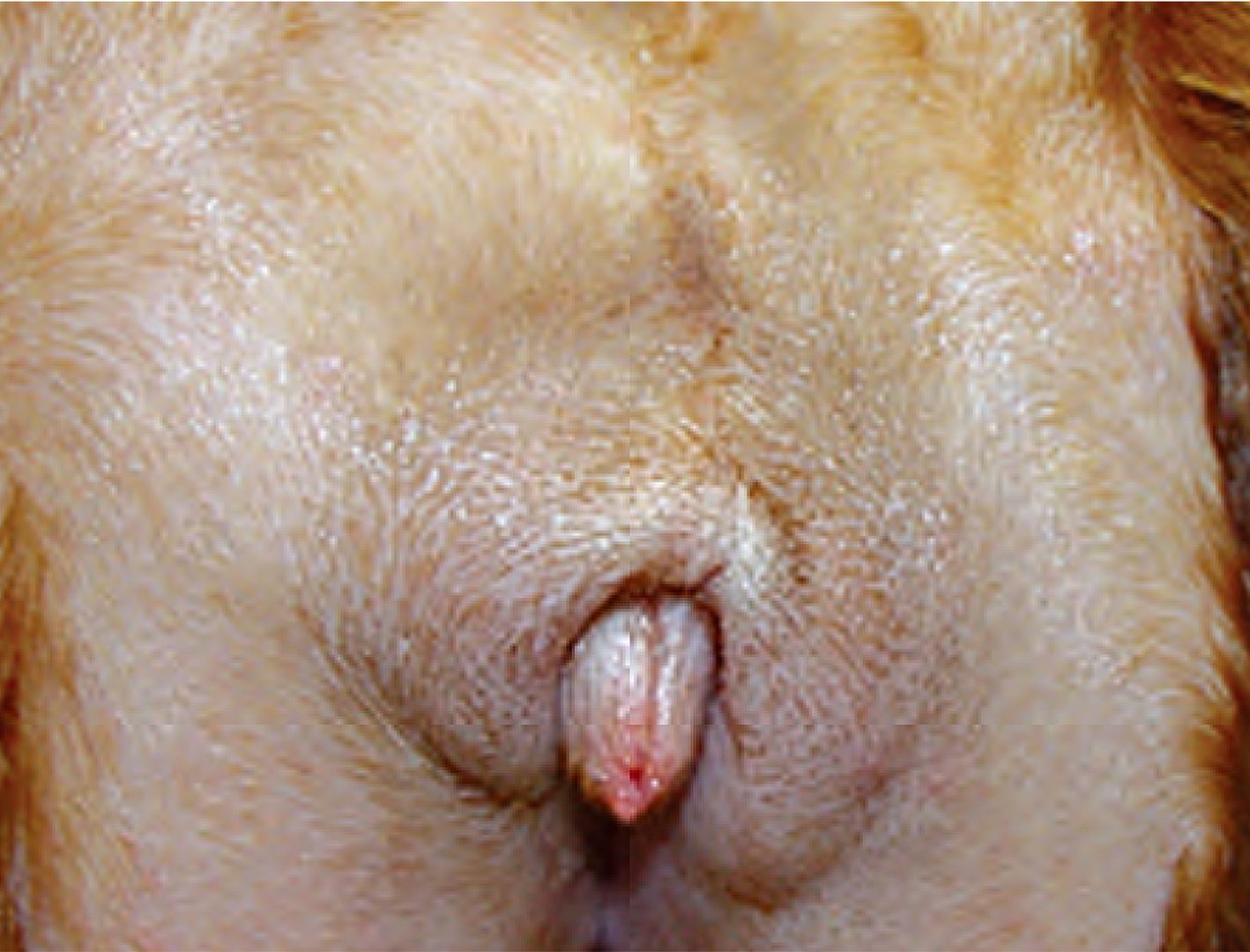
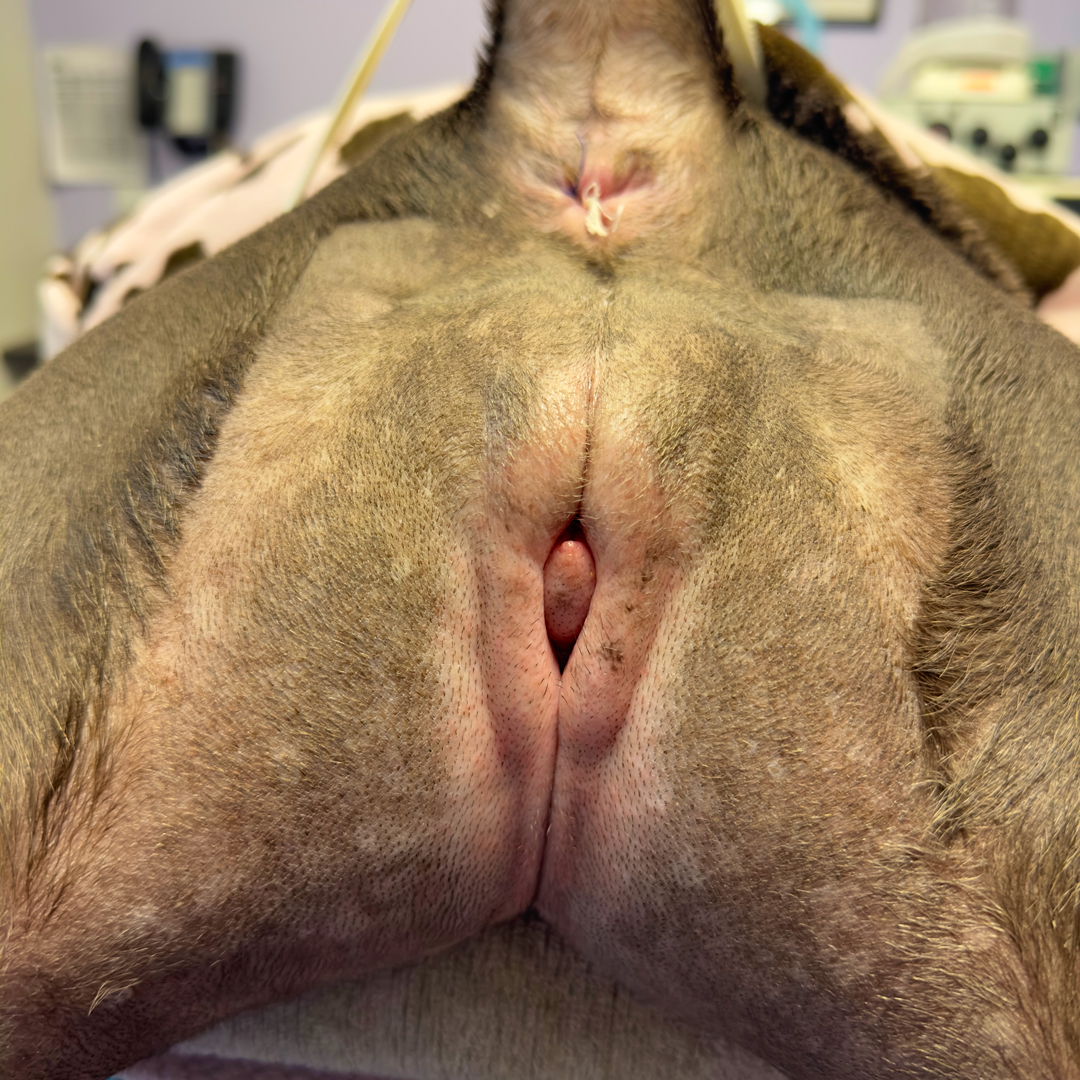
Female dogs may exhibit a conformational defect known as a recessed vulva, distinguished by an excess of skin folds obscuring the vulva. This condition can be a result of either or a combination of both an undeveloped juvenile vulva and superfluous skin folds that have the potential to trap moisture, fostering bacterial growth around the female dog’s urinary tract. Contrary to previous assumptions, early spaying does not seem to contribute to this issue. If left unmanaged, recessed vulvas in female dogs can lead to various health complications.
The likelihood of developing a recessed vulva can be influenced by breed, size, and weight management. Medium-sized and larger breeds are more prone to it. Prevention strategies include maintaining optimal body weight with appropriate nutrition and regular physical activity to minimize risks associated with excessive perivulvar skin formation or unnecessary skin fold development around the area. Clinical signs indicating issues might include inflammation surrounding the perivulvar region (perivulvar dermatitis), vaginitis, repeated episodes of urinary tract infections (UTIs), or loss of bladder control.
When assessing for this abnormality in conformation within female dogs—especially when considering recurrent urinary tract infections—a comprehensive inspection should take place focused on anatomical irregularities present, along with gauging how advanced they are over time. It is often advised that urinalysis alongside bacterial culture and antibiotic sensitivity tests be performed. This is due to the tendency toward simultaneous urinary tract infection, potentially involving strains resistant to antibiotics routinely used today alongside perivulvar dermatitis and vaginitis. These tests are crucial to prevent the emergence of antibiotic-resistant infections. If typical daily cleaning of the perivulva skin and antibiotic therapy fails to clear these persistent or recurrent infections, then procedural options like surgical rectification via episioplasty might become warranted for removing problematic excessive tissue encompassing genitalia.
Understanding Canine Episioplasty
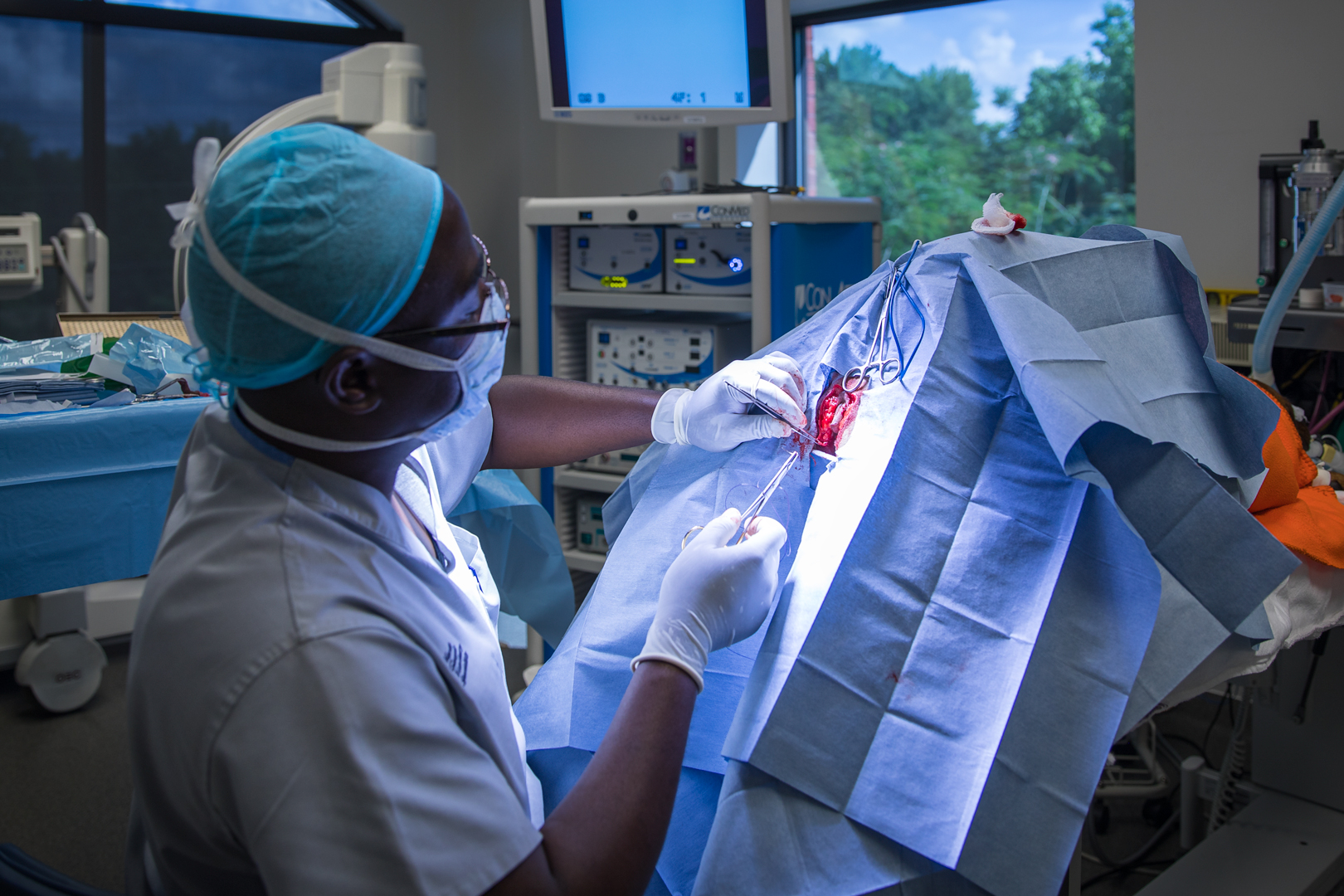
Episioplasty, often referred to as vulvoplasty, is a surgical intervention aimed at rectifying anatomical problems associated with a recessed vulva in canines. A common issue with this condition includes the formation of excessive perivulvar skin folds above the vulva, which creates an ideal moist environment that fosters bacterial proliferation and leads to infection.
By performing this surgery, veterinarians are able to mitigate persistent dermatological conditions such as perivulvar dermatitis, frequent urinary tract infections (UTIs), and vaginal infections. The operation improves ventilation around the vulval area thereby diminishing the rate of infectious occurrences while enhancing overall well-being and comfort for the pet.
Additionally, addressing the folds of skin around the vulva can significantly reduce the risk of chronic infections.
Episioplasty plays a crucial role in reducing irritation caused by excessive licking behaviors typically seen in dogs affected by an indented vulva. By addressing these discomforts through surgery, it helps curb complications and eliminates continuous dependence on medical therapy for managing these issues.
The Episioplasty Procedure
Before the episioplasty procedure, the veterinary team conducts comprehensive blood tests to ensure the dog is healthy and suitable for anesthesia. The genital region is then shaved and cleaned thoroughly to minimize the risk of infection during surgery. Marking the area for excision is done with precision to ensure the optimal amount of skin is removed.
During the surgery, a crescent-shaped section of skin is resected from the area dorsal to the vulvar commissure, extending ventrally and laterally to the vulva on either side. This involves not only the removal of skin but possibly some underlying fat as well to improve the vulva’s position. Hemostasis is achieved using electrocautery, and the subcutaneous tissue and skin are closed with skin sutures in an interrupted pattern to prevent dog-ear formation.
The procedure is performed with the dog in a perineal position, and a purse-string anal suture is placed to secure the area from fecal contamination. If insufficient tissue is excised, the symptoms may persist, necessitating further surgical intervention. Therefore, it is crucial to accurately estimate and remove the required amount of skin during the initial surgery. This surgery prevents skin layers from rubbing together, which can lead to vulvar inflammation. It also resolves inflammation and infection in the area by improving the conformation of the vulva and enhancing perivulva ventilation.
Benefits of Episioplasty
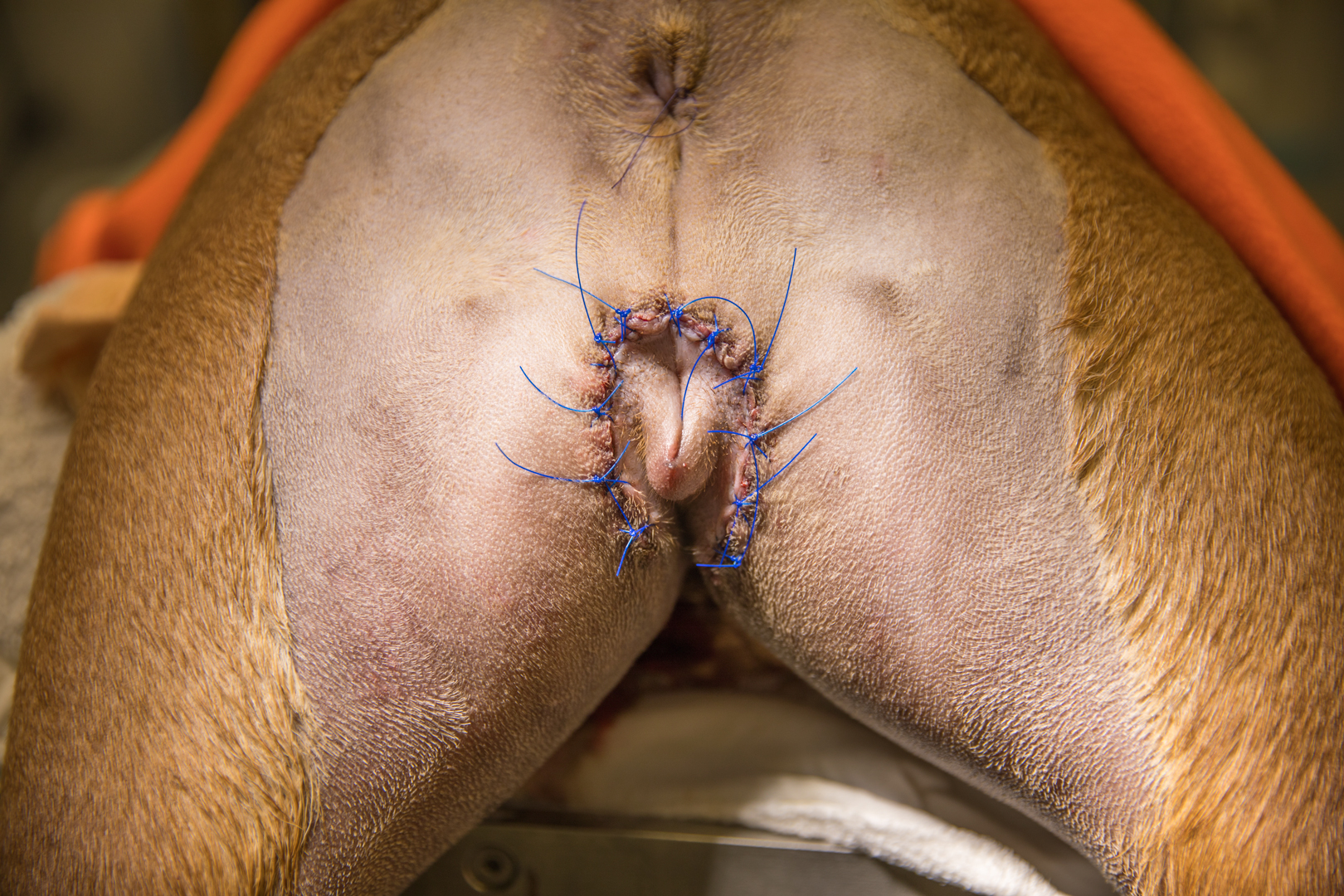
Episioplasty provides a multitude of advantages, notably by:
Diminishing the buildup of moisture around the vulva
Dramatically decreasing the likelihood of infection
Reestablishing the usual shape of the vulva
Enhancing air circulation
Hindering bacterial proliferation
Episioplasty decreases swelling and discomfort near the vulva, alleviating pain and curbing excessive licking. This surgical intervention has successfully eliminated chronic urinary tract infections for many patients, yielding high levels of owner satisfaction.
Post-Surgical Care
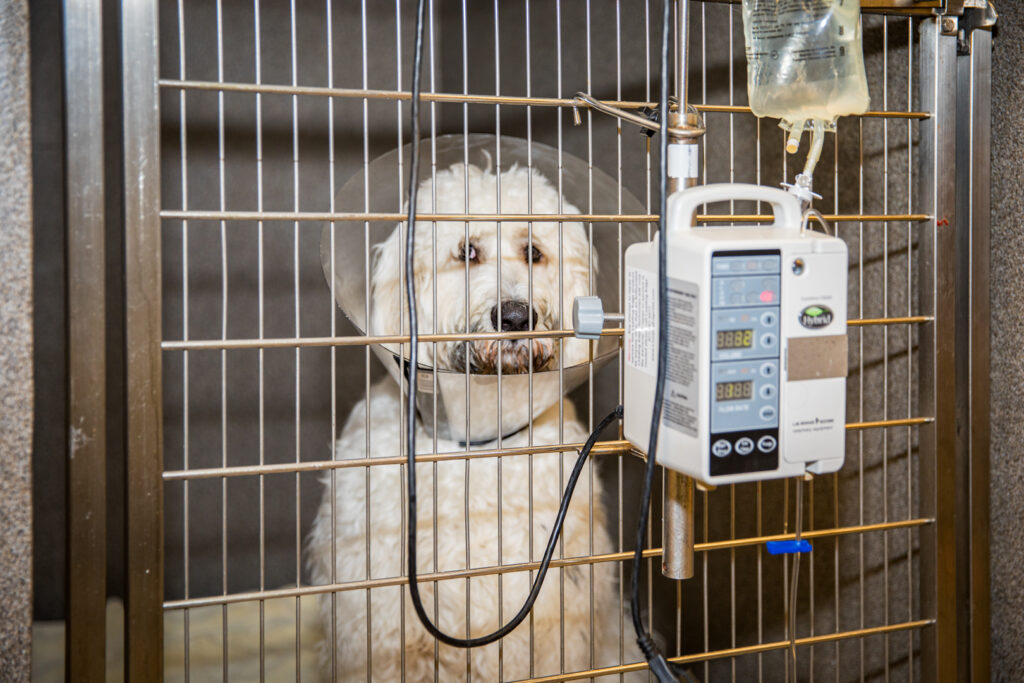
Post-operative care is critical to ensuring a seamless recuperation following an episioplasty. Veterinarians often prescribe antibiotics alongside pain relief medications to manage discomfort and stave off infection, which helps minimize surgical complications. Nonsteroidal anti-inflammatory drugs are employed to reduce swelling and ease initial post-surgery pain.
It’s imperative to keep the dog tranquil and limit its movements to prevent issues like wound dehiscence from arising. Using an Elizabethan collar helps stop the dog from licking at its stitches, which promotes healing and prevents infection risks. The removal of sutures occurs within 10 to 14 days following surgery.
During recovery, frequent surgical site inspections at home are needed to observe the progression of healing and quickly report any complications that may emerge. Ensuring the pet does not undertake heavy exercise and providing a peaceful setting contribute to successful convalescence outcomes.
Complications
Episioplasty is usually a safe surgical process. It encompasses certain possible risks and complications. The requirement of general anesthesia for the operation introduces inherent anesthesia risks like cardiac and respiratory issues and negative responses to anesthetic substances.
A noteworthy postoperative hazard is wound dehiscence, which is a reopening of the surgical incision – a particular concern if excessive tissue has been excised or if the dog engages in too much activity following the procedure. Managing pain effectively after surgery and taking appropriate care and measures to protect the surgical site until it is fully healed are essential.
Recovery Process
Monitoring the recovery phase after an episioplasty is paramount to ensuring a smooth healing process. During the initial 24 to 48 hours, as anesthesia dissipates, dogs might experience drowsiness and require a tranquil environment for recuperation. To alleviate swelling and discomfort during this time, cold packs can be gently placed on the area of surgery.
Restricting your dog’s physical activities for a minimum of two weeks after surgery plays a critical role in proper wound healing. Dogs should refrain from vigorous exercise such as running or leaping and remain mostly indoors, with only short, supervised walks outdoors when necessary.
Consistently examining the site where surgery was performed is key to detecting potential signs of infection like escalated redness, swelling, or unusual discharge. To safeguard against contamination and irritation at this sensitive spot, abstain from giving baths or performing grooming routines while the surgical site heals.
Cost Considerations
Expenses associated with episioplasty in dogs can differ greatly, depending on the veterinarian performing the procedure, geographical location, and any additional treatments that may be needed. Typically, these costs encompass fees for the surgery itself, anesthesia, medications required during recovery, and subsequent check-ups that are crucial to ensure full healing.
Should there be a need for extra medications after the operation, or if more appointments are necessary beyond standard follow-up care – especially if complications arise either during or post-surgery – this could lead to an increase in total expenditure. Awareness of these potential expenses is beneficial when considering a dog’s medical care options.
Veterinary Insights and Advice
During episioplasty procedures, veterinarians may use various techniques, such as scalpel, electrosurgery, or laser. A combination of subcutaneous and skin sutures is necessary to close the wound margins effectively and reduce the risk of wound complications.
Proper tension on the skin during surgery is essential to achieving optimal outcomes. Should skin folds remain after the initial excision, additional layers of skin might need to be removed along its outer edge to ensure no folds persist after surgery. This helps prevent complications related to overlapping skin layers.
After completing the procedure, it’s crucial to maintain cleanliness at the surgical site. The edges of the wound can be cleaned with gauze moistened with sterile saline solution to remove debris. Vigilant monitoring for signs of infection or other issues following surgery and follow-up appointments to ensure the surgical site is fully healed with no complications is encouraged
Summary
It is essential for the health and happiness of female dogs to recognize and address the condition known as recessed vulva when it occurs. The canine episioplasty or vulvoplasty surgical procedure provides an effective remedy by significantly enhancing the dog’s comfort, lowering the risk of infections, and alleviating pain.
As responsible pet guardians, we must consult veterinarians about this operative intervention to improve our cherished companions’ well-being. Taking steps like considering episioplasty aligns with a commitment to guaranteeing healthy lives for our furry friends.
Frequently Asked Questions
What is a recessed vulva in female dogs?
A recessed vulva is a conformational abnormality in female dogs marked by excessive skin folds that can trap moisture and potentially lead to infections in the perivulva skin, genital tract, and lower urinary tract.
Why is canine episioplasty necessary?
Canine episioplasty corrects anatomical concerns associated with a recessed vulva to mitigate infection risks and increase comfort for dogs.
What are the potential risks of episioplasty?
The potential risks of episioplasty include complications from general anesthesia, wound dehiscence, and infection, though these occurrences are relatively rare when proper postoperative care is maintained.
How should I care for my dog post-surgery?
Proper post-surgical care for your dog involves administering prescribed medications, limiting their activity, using an e-collar, and monitoring the surgical site for any signs of infection. This approach will help ensure a smooth recovery.
How much does episioplasty cost?
The expense associated with an episioplasty might fluctuate considerably based on the veterinarian performing the procedure and their geographical location. The overall cost of the procedure includes charges for surgery, anesthesia, medications, and subsequent follow-up appointments.
You should contact your nearby veterinary practice to obtain a comprehensive quote tailored to your needs.

